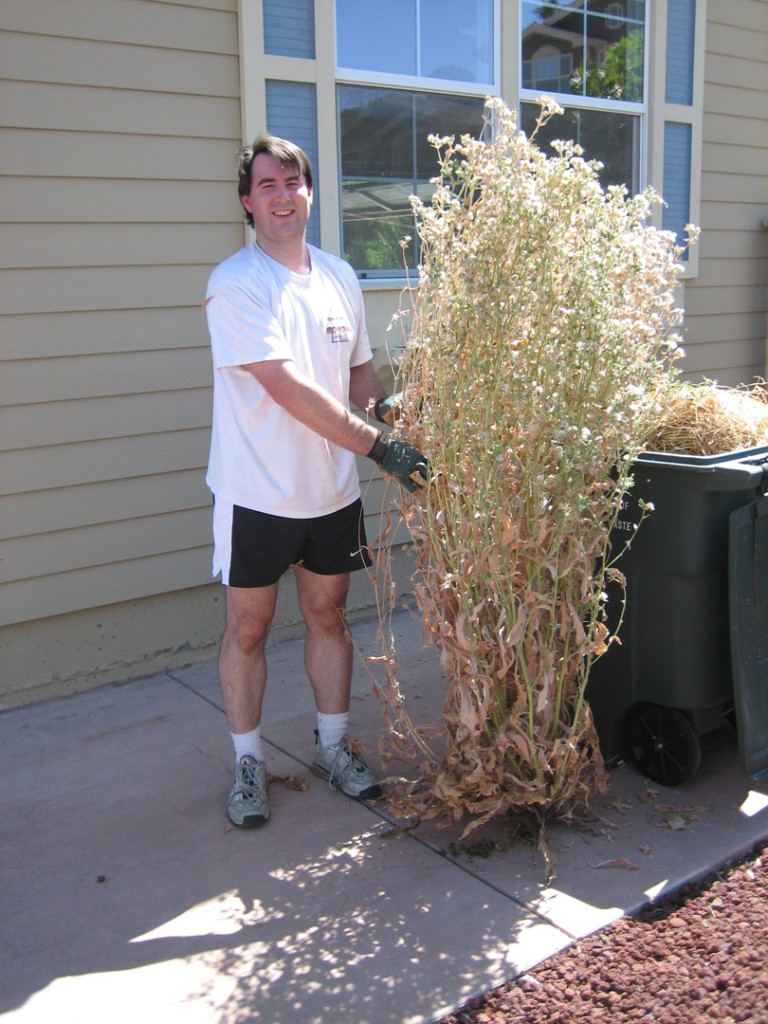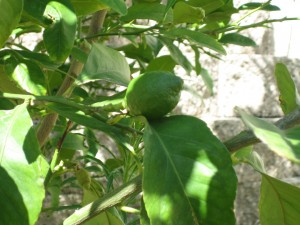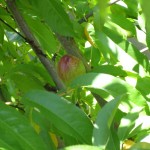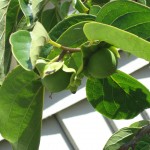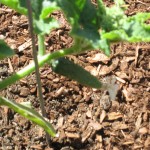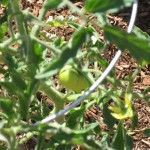Normally, I don’t mind cold, rainy weather. I think it’s wearing on me a bit now, seeing as it is June. Mother Nature did cooperate a bit over the long Memorial Day weekend, and we took the opportunity to do something in the yard besides keep the weeds at bay. We planted a couple of citrus trees in the back yard.
Our property is sort of on a hillside, so on the west side of the yard, there is a retaining wall and a little hillside. There are also a few semicircular planters. When we moved in, they were filled with geraniums. I don’t have a problem with the way geraniums look, but I cannot stand the way they smell. I hated trimming them because of the smell, so they got really out of control. Needless to say, we wanted to remove them.
So we did remove them. And those planters have been sitting empty since last summer.
We always intended to put a few citrus trees in, but based on our research, the best time to plant citrus is April. Well, April came and went, and May almost did too. Thankfully, local garden centers seemed to have plenty of healthy-looking citrus trees the size we were looking for, so we figured we probably weren’t too late to give it a shot.
Before we started any digging or planting, we made a couple of watering stakes. We wanted to use watering stakes to encourage the roots to grow down, rather than out. But for a piece of plastic with holes in it, we figured we could make it ourselves for less than buying a ready-made one (note: the one in the link was actually more expensive at the brick-and-mortar Home Depot). So we bought a 10-foot piece of 1.5″ PVC and cut it into three pieces. So each finished stake would be just a bit longer than a yard.
Next we drilled staggered holes on 3-inch intervals with a 3/8″ drill bit. On the bottom third of each stake, we used a smaller bit, probably about 3/16″, to drill additional holes at regular intervals between the large holes. We finished it off by gluing a cap to the bottom and adding a removable cap to the top (it will keep out dirt and debris, but we can remove it to water). We made three stakes for roughly the price of one at the store.
Once the stakes were ready, it was time to start digging. We dug holes about twice the size of the container, and also used a post hole digger to add a deep, narrow hole for the watering stake. I don’t have pictures of this because I was busy, and my hands were muddy. But if you’ve seen one hole, you’ve seen them all, right?
We mixed the soil we removed from each hole with some amended garden soil in a proportion of 50-50. We also mixed in some controlled release fertilizer (we used Vigoro Citrus and Avocado Plant Food, following the package directions to determine the proper amount). We placed the watering stake and the root ball in their respective holes, and filled in the cavity with our soil mix. Finally, we watered, created a watering trough ring around each tree, and covered the area around the base with bark mulch.
Both the trees we planted were oranges, but we chose two different varieties so that (once the trees mature enough to start producing) we would have fresh oranges for a longer period of time. One tree is a Washington Navel, which ripens from winter through early spring, and the other is a late harvest Valencia, which ripens in early spring to summer. Assuming these trees do well, we should have fresh oranges from our own trees for more than half the year.
© 2011 The Beehive All Rights Reserved






